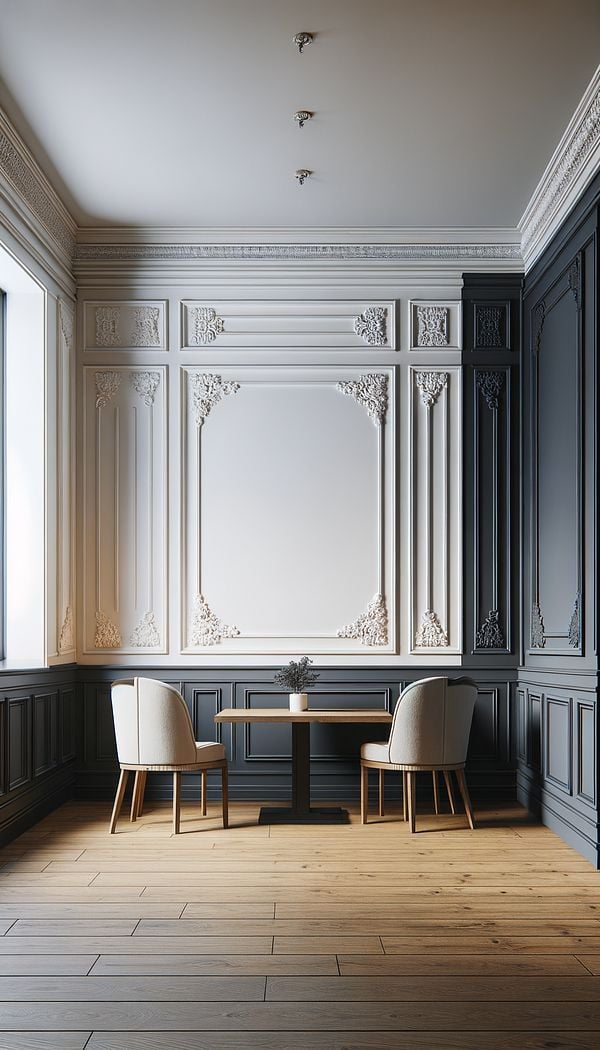What is Wainscoting?
Wainscoting is a decorative wall paneling used primarily in the lower section of a wall.
Description
Wainscoting, a term often synonymous with warmth and craftsmanship, refers to the practice of lining the lower part of an interior wall with decorative paneling. This design feature, having roots in the 18th century, was initially adopted for insulating purposes and to prevent damage to walls. Over the years, wainscoting has evolved into a stylistic element, adding texture, depth, and character to a space.
There are varying styles of wainscoting, including raised panel, flat panel, beadboard, and board and batten, each offering its own unique aesthetic appeal. Depending on the materials used—such as wood, MDF, or PVC—wainscoting can complement traditional homes as much as it does modern interiors. Its installation is typically confined to the lower third of a wall, though it can vary based on design preferences and the interior's architectural details.
Beyond aesthetics, wainscoting provides a layer of durability and protection to walls, making it a practical addition to high-traffic areas like hallways and dining rooms. It can also be employed as a means of concealing imperfections in walls, making it a multifunctional design choice for any interior.
Usage
Wainscoting is commonly found in residential settings, particularly in dining rooms, hallways, bathrooms, and staircases. It's also a popular choice in commercial spaces such as restaurants and hotels, lending an air of sophistication and timeless elegance. Its adaptability means it can be painted or stained to match any interior design scheme, making it a versatile option.
FAQs
-
What materials are commonly used for wainscoting?
Wainscoting can be made from a variety of materials including wood, medium-density fiberboard (MDF), and polyvinyl chloride (PVC), each offering different aesthetic and functional benefits.
-
How high up the wall does wainscoting typically go?
Though traditionally installed up to the lower third of a wall, the height of wainscoting can vary greatly depending on the design and architectural details of the space.
-
Can wainscoting be installed in any room?
Absolutely! While commonly used in dining rooms and hallways, wainscoting can be installed in any room, including bathrooms and kitchens, adding character and protection to the walls.
Practical Application
When considering adding wainscoting to your space, select a style that compliments your home's architecture and overall design theme. Consider the material carefully, as some might be more suitable for specific areas—like PVC for moisture-rich environments. Painting or staining your wainscoting can emphasize its details and match it to your existing interior. Finally, installation can be a DIY project for those handy with tools, but professional installation is recommended for the best results.
-
Architectural Elements199 articles
-
Design Styles478 articles
-
Decorative Techniques322 articles
-
Materials & Textiles360 articles
-
Wall Treatments & Finishes157 articles
-
Ogee Bracket FootAn Ogee Bracket Foot is a decorative furniture foot style characterized by a curved s-shape.
-
SizeSize refers to the dimensions or proportions of an object or space.
-
TV StandA piece of furniture designed to support a television and related media equipment.
-
CapitalIn interior design, capital refers to the topmost portion of a column.
-
GreigeGreige is a color that blends gray and beige tones.
